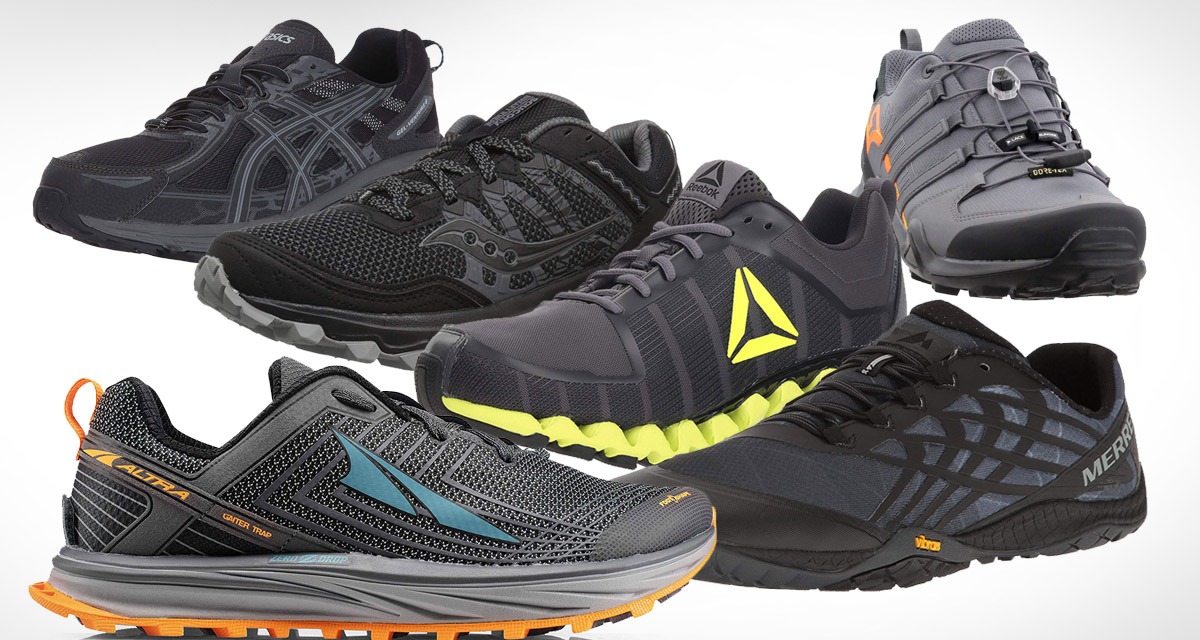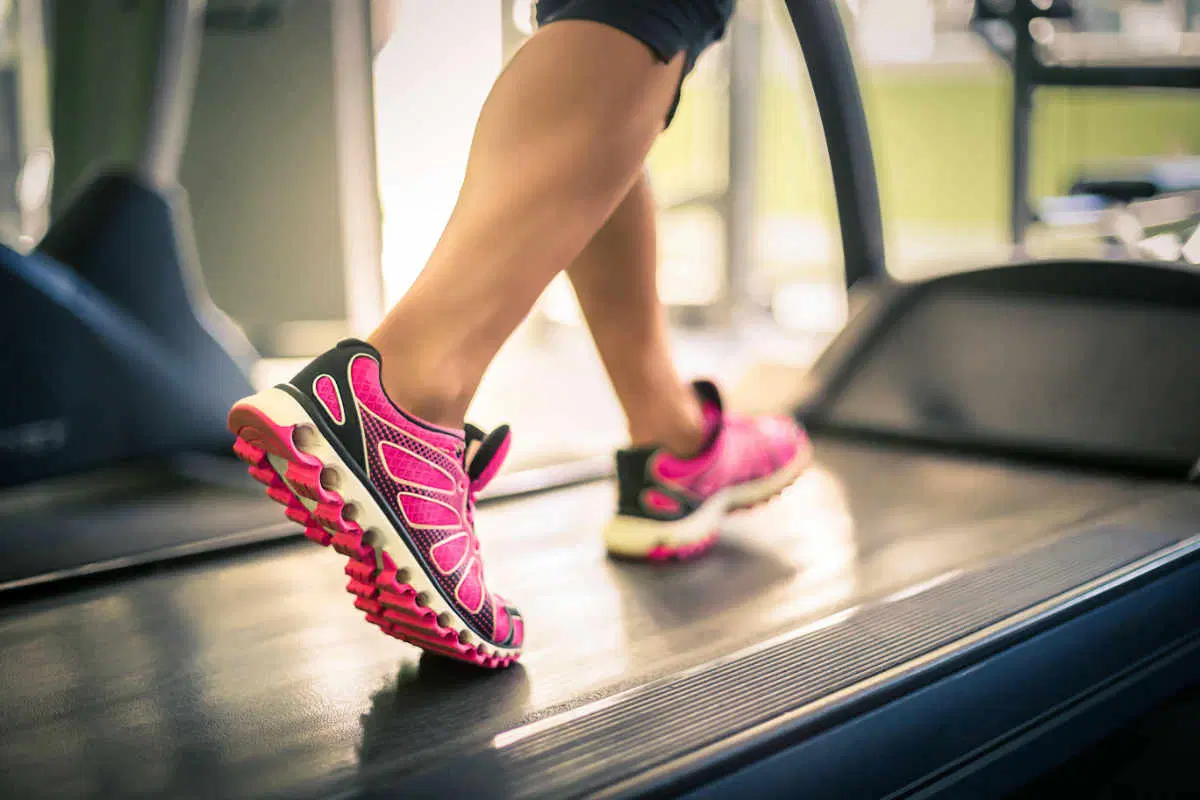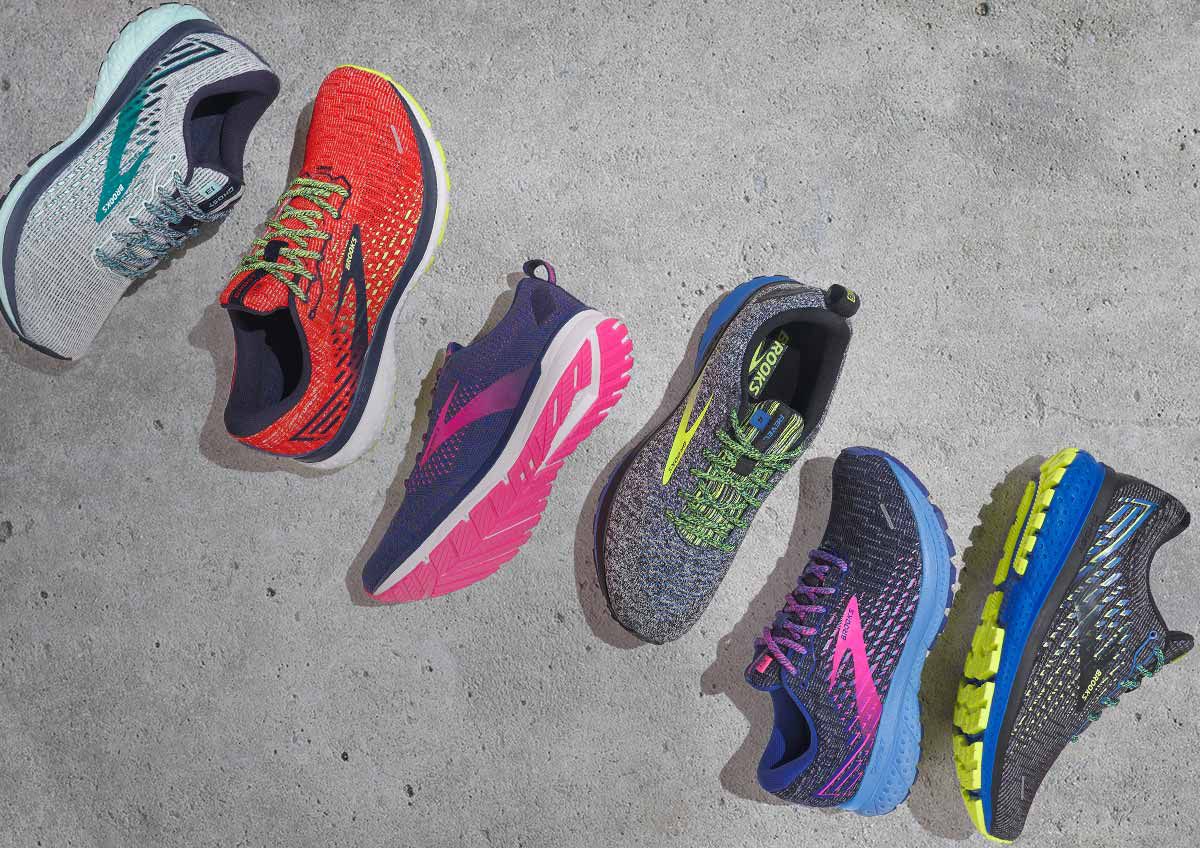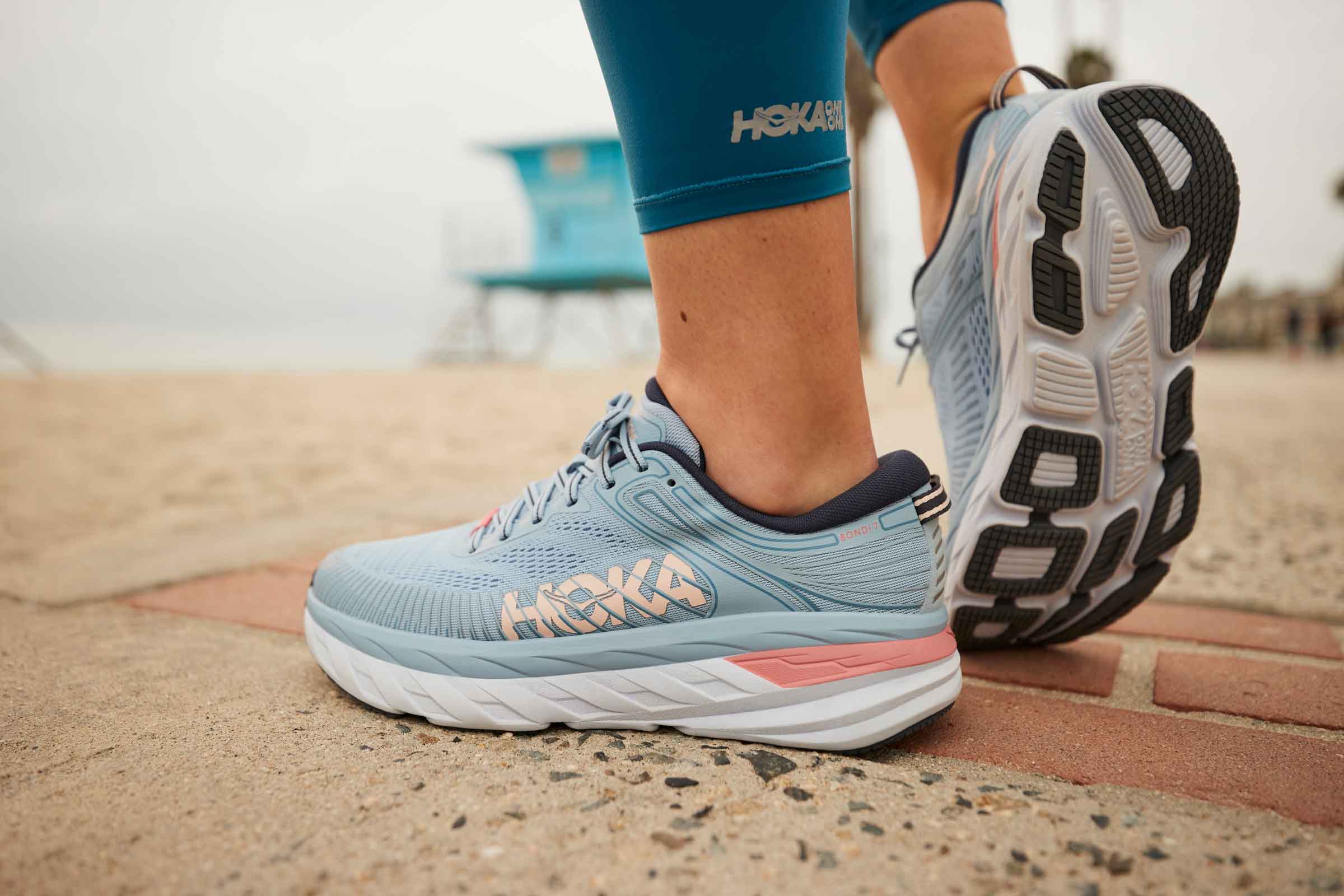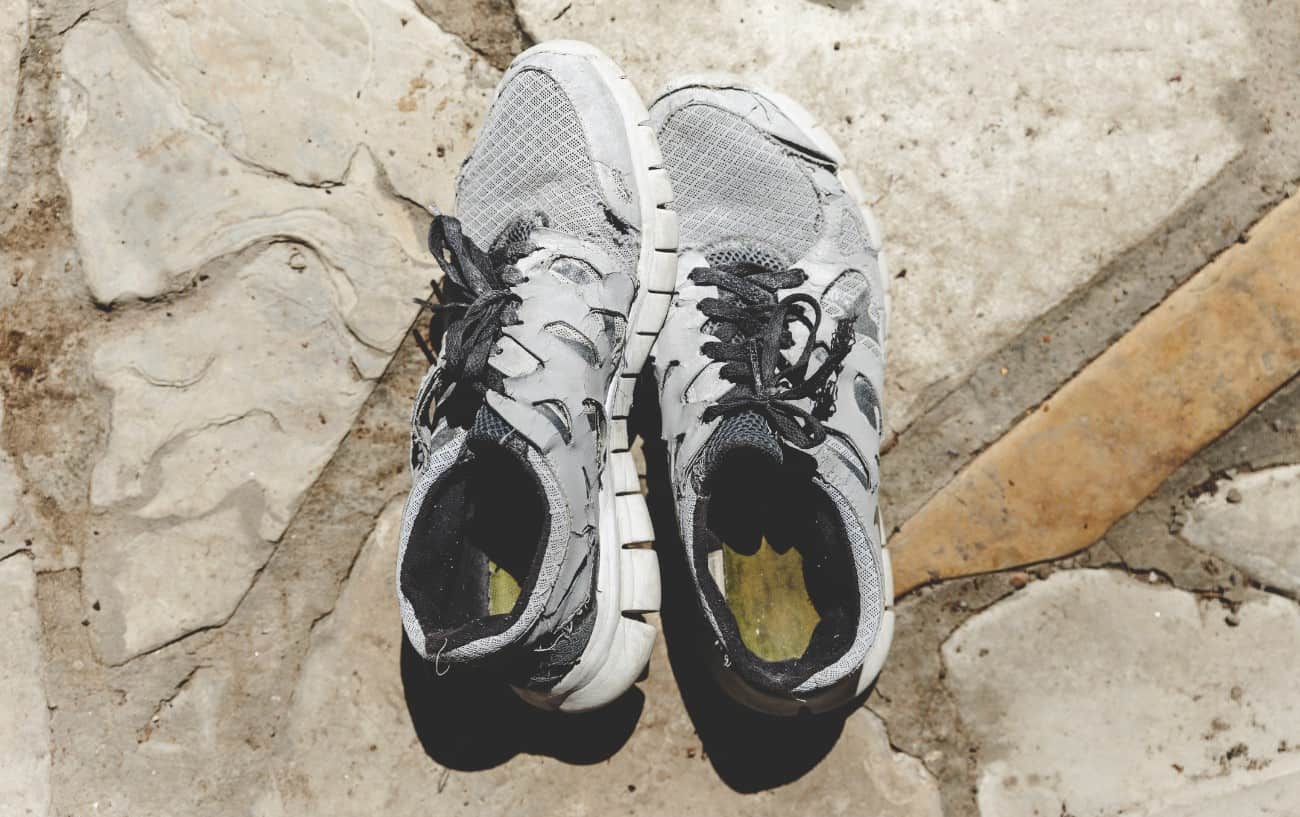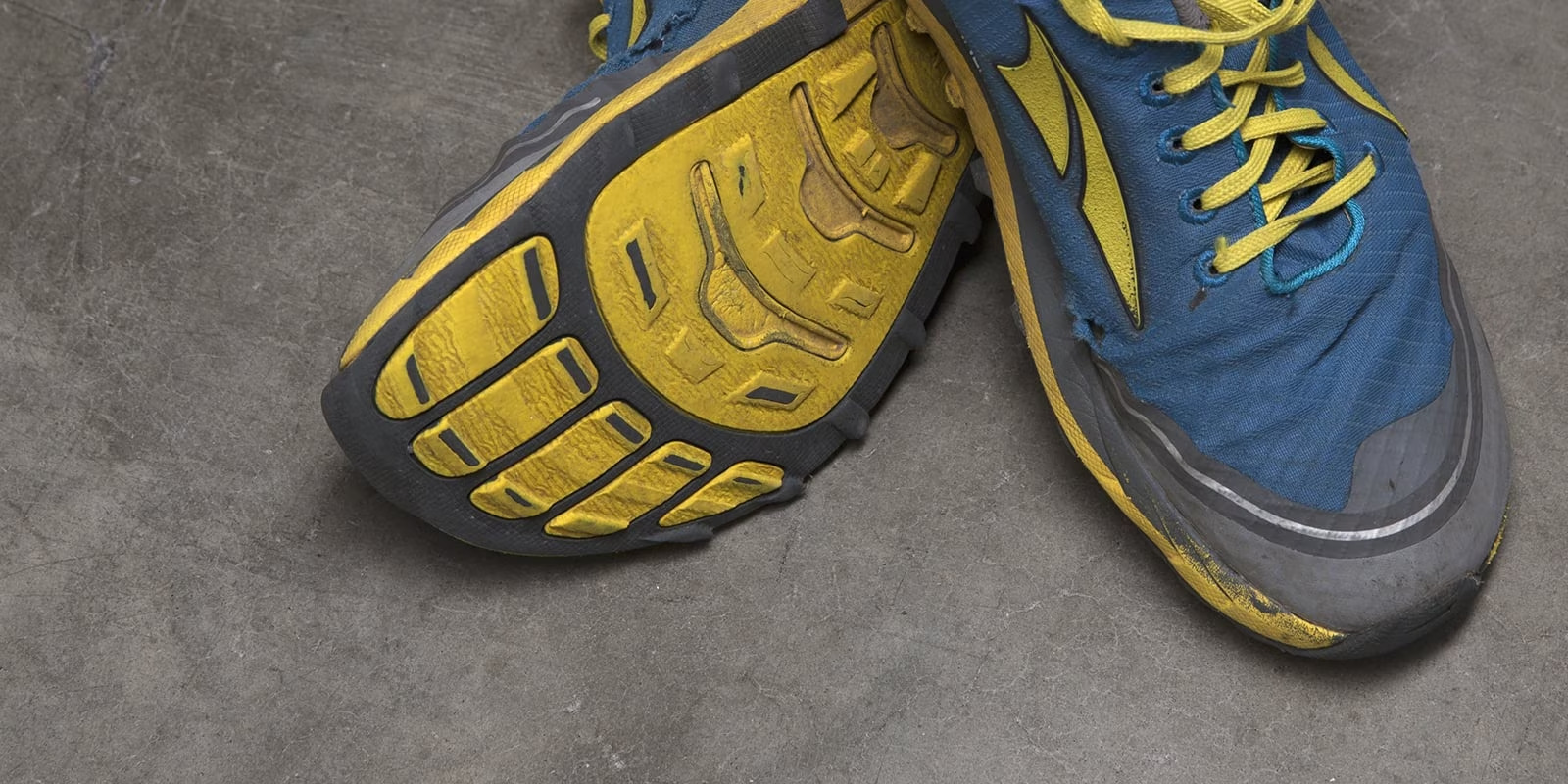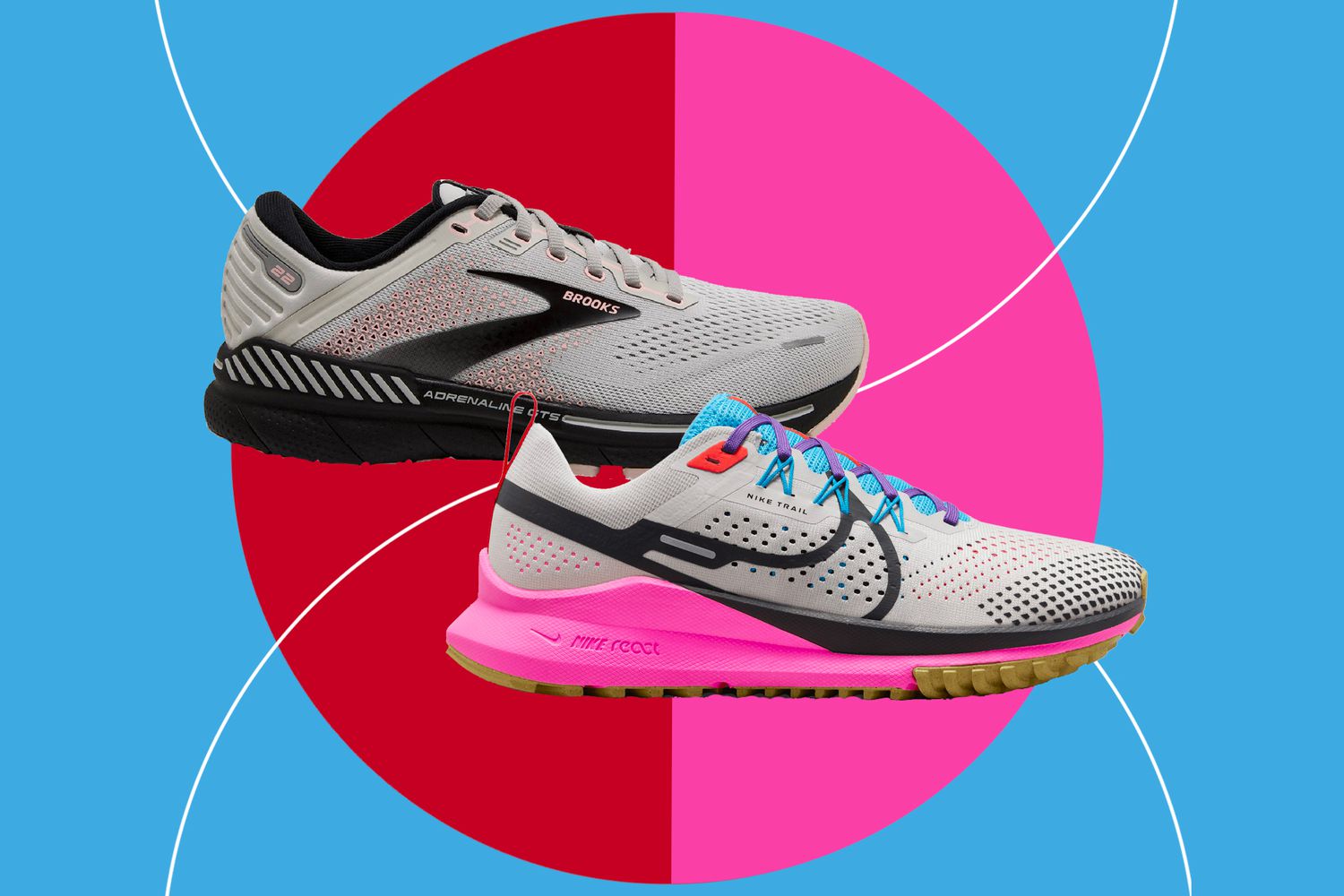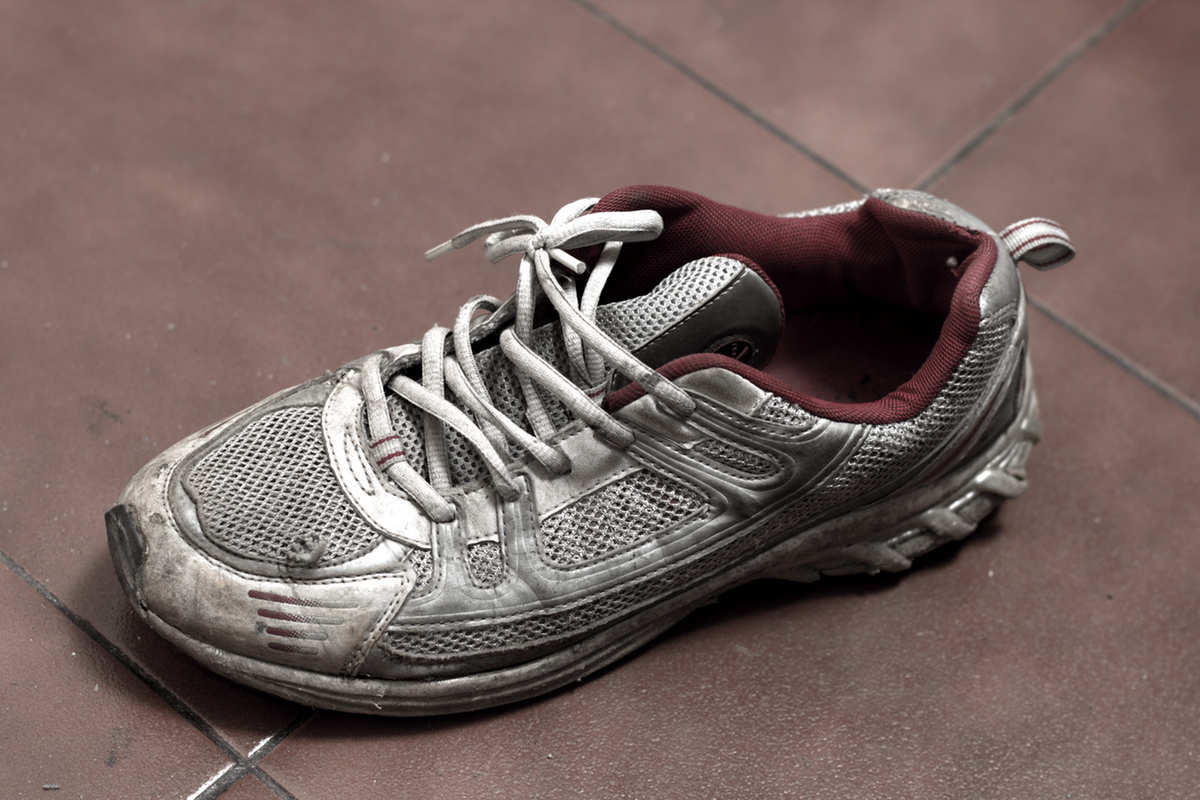

Featured
When To Retire Running Shoes
Modified: January 2, 2024
Featured: Learn when it's time to retire your running shoes for optimal performance and injury prevention. Don't miss out on essential tips for keeping your feet happy and healthy.
Introduction
Running shoes are an integral part of any runner’s gear, providing support, cushioning, and protection for the feet and legs. However, like any other piece of equipment, running shoes have a limited lifespan. Over time, the constant impact and stress of running can cause the shoes to wear out, leading to decreased performance and an increased risk of injury.
Knowing when to retire your running shoes is essential for maintaining optimal foot health and preventing potential issues. In this article, we will explore the signs that indicate it’s time to replace your running shoes. By paying attention to these signs, you can ensure that you’re running in the best footwear possible, minimizing the risk of discomfort, pain, and injuries.
It’s important to note that the lifespan of running shoes can vary depending on various factors, such as running frequency, running surface, body weight, and running gait. However, there are some common signs you can look out for that indicate your shoes may need to be retired.
In the following sections, we will discuss these signs in detail, helping you make an informed decision about when to retire your running shoes and invest in a new pair.
Signs of Wear and Tear
One of the most obvious signs that your running shoes need to be replaced is visible wear and tear. Take a look at the outsole, midsole, and upper of your shoes. Are there any noticeable signs of damage, such as holes, cracks, or significant wear on the soles? If so, it’s a clear indication that your shoes are no longer providing the necessary support and protection.
Additionally, pay attention to the overall appearance of your shoes. Are they looking worn out and faded? This can be a sign that the materials have become less durable and may not offer the same level of security they once did.
Another aspect to consider is the tread pattern on the outsole of your running shoes. As you put miles on the shoes, the tread will gradually wear down. If you notice a significant reduction in the depth and grip of the tread, it’s a sign that the shoes have lost their traction. This can be particularly dangerous when running on wet or uneven surfaces, increasing the risk of slips and falls.
Inspect the midsole of your shoes as well. Over time, the cushioning properties of the midsole can deteriorate, resulting in a less comfortable and less supportive running experience. If your shoes feel flat and provide less shock absorption than when you first wore them, it may be time for a replacement.
Lastly, examine the upper of your running shoes. Look for any signs of fraying, tearing, or stretching in the fabric or mesh. If the upper is compromised, it can affect the fit and stability of the shoes, potentially causing discomfort or even injury while running.
It’s important to note that even if your shoes don’t exhibit obvious signs of wear and tear, they may still need to be replaced after a certain number of miles. In the next section, we will discuss mileage considerations when determining the lifespan of your running shoes.
Mileage Considerations
When it comes to determining the lifespan of your running shoes, considering the mileage you’ve covered is crucial. As a general rule of thumb, most running shoes have a recommended mileage limit of 300-500 miles. However, this number can vary depending on factors such as your running style, body weight, and the type of terrain you run on.
While it may be tempting to push your shoes beyond their recommended mileage limit, it’s important to remember that running shoes are designed to provide optimal support and cushioning within a certain range. As you accumulate mileage, the midsole foam can lose its responsiveness, resulting in a decrease in shock absorption and energy return. This can lead to discomfort and an increased risk of injuries, such as shin splints or stress fractures.
Keep a record of the mileage you’ve covered in your running shoes. Many running apps and GPS watches have features that track your mileage automatically, making it easier to keep track. Once you’ve reached the recommended mileage limit, it’s time to start considering a replacement.
It’s worth noting that the recommended mileage limit is just a guideline, and some factors may influence the longevity of your shoes. For example, if you’re a heavier runner or primarily run on more challenging terrains like trails or rugged surfaces, your shoes may wear out faster. On the other hand, if you’re a lighter runner or stick to smoother surfaces like tracks or treadmills, your shoes may last longer.
Ultimately, it’s important to listen to your body and pay attention to any signs of discomfort or decreased performance. If you start experiencing aches or pains that were not present before or notice a significant decline in cushioning and support, it’s a strong indication that it’s time to retire your running shoes.
In the next section, we’ll dive deeper into the signs of cushioning breakdown, which is another crucial factor in determining the lifespan of your running shoes.
Cushioning Breakdown
One of the primary purposes of running shoes is to provide cushioning to absorb the impact of each footstrike during your run. Over time, the cushioning materials in your shoes can break down and lose their ability to provide adequate shock absorption. This is known as cushioning breakdown, and it’s a major indicator that your running shoes need to be replaced.
If you notice that your shoes feel noticeably less cushioned and squishy underfoot than when they were brand new, it’s a clear sign that the cushioning in the midsole has deteriorated. This can lead to a harsher impact on your joints and muscles, increasing the risk of overuse injuries such as tendonitis or knee pain.
Another way to assess cushioning breakdown is to compare the wear patterns on the outsole and midsole of your shoes. If you observe uneven wear, with certain areas of the shoe showing significantly more compression and flattening of the cushioning material, it’s a strong indication that the shoes have worn out.
Running shoes are typically designed with different layers of foam, such as EVA (ethylene-vinyl acetate) or PU (polyurethane), to provide cushioning. As you accumulate mileage, these foams will naturally compress and lose their elasticity. Eventually, they will no longer be able to provide the necessary support and shock absorption, compromising the overall performance and comfort of your shoes.
It’s important to mention that cushioning breakdown can occur even if there are no visible signs of wear and tear on the shoes. Therefore, it’s crucial to pay attention to how your shoes feel during your runs. If you notice a significant decrease in cushioning and comfort, it’s time to start considering a new pair of running shoes.
In the next section, we’ll explore the importance of support and its impact on the lifespan of your running shoes.
Lack of Support
Support is another critical aspect of running shoes that can deteriorate over time, indicating the need for a replacement. Running shoes are designed to provide stability and support to the feet and ankles, helping to maintain proper alignment and reducing the risk of injuries.
If you notice that your shoes no longer offer the same level of support as when you first purchased them, it’s a clear sign that they have worn out. This lack of support can manifest in various ways. For example, you may feel a decrease in arch support, causing your feet to feel flat or pronate excessively. This can lead to issues like plantar fasciitis or foot fatigue.
In addition, worn-out shoes may not provide the same level of lateral stability, making it more challenging to maintain proper alignment and balance as you run. This can increase the chances of ankle sprains or rolling your foot outward.
To assess the support of your shoes, take note of any changes in how they fit and feel. If you find that your feet are not adequately supported or that your gait feels less stable, it’s a strong indication that your shoes have lost their supportive properties.
It’s important to consider not only the overall structure of the shoe but also the internal components that contribute to support. For example, the foam cushioning in the midsole may have compressed or worn out, reducing its ability to provide stability. The upper of the shoe may have stretched or become less structured, leading to a looser fit and less support.
Running in shoes that lack sufficient support can lead to a range of issues, from discomfort and pain to more severe injuries. It’s essential to prioritize your foot health and invest in a new pair of running shoes when your current pair no longer provides the necessary support.
In the next section, we’ll explore the telltale signs of uneven tread wear and its implications for the lifespan of your running shoes.
Uneven Tread Wear
Examining the tread wear pattern on the outsole of your running shoes can provide valuable insights into their condition. Uneven tread wear is a common sign that your shoes have worn out and may need to be replaced.
When you run, your feet make contact with the ground in a specific way, depending on your running gait. Over time, this repetitive movement can cause certain areas of the outsole to wear down more quickly than others. If you notice that certain parts of the tread are significantly more worn or have even developed bald spots, it’s a clear indication of uneven tread wear.
Uneven tread wear can be caused by a range of factors. It could be due to an imbalance or misalignment in your running mechanics, such as overpronation or supination. It can also be influenced by the type of terrain you typically run on. For example, if you frequently run on uneven surfaces or rough trails, it can accelerate the wear of specific areas on the outsole.
Uneven tread wear not only compromises the traction and grip of your shoes, but it can also affect your overall running performance. As the tread wears down, you may notice a decrease in stability and traction, making it more challenging to maintain your footing while running. This can increase the risk of slips and falls, especially in wet or slippery conditions.
It’s important to regularly inspect the tread wear pattern of your running shoes to identify any uneven wear. By catching it early, you can make informed decisions about when to retire your shoes and prevent further damage or potential injuries. Remember, running shoes with a worn-out tread may not provide the necessary grip and stability to keep you safe during your runs.
If you notice significant and uneven tread wear, it is a strong indication that it’s time to replace your running shoes. In the next section, we’ll explore the importance of paying attention to the overall comfort of your shoes when determining their lifespan.
Shoes Feeling Uncomfortable
Your comfort is paramount when it comes to running shoes. If you notice that your shoes are feeling increasingly uncomfortable during your runs, it’s a clear sign that they may need to be replaced.
When you first bought your running shoes, they likely provided a snug and supportive fit. However, over time, the materials may stretch, lose their structure, or even break down. This can result in a less secure fit and a decrease in overall comfort.
If you start experiencing discomfort while running, such as hot spots, blisters, or pressure points, it’s important to investigate the cause. It could be a sign that the materials in your shoes have worn down or that the cushioning has deteriorated, leading to a lack of support and protection.
In addition to physical discomfort, pay attention to how your feet feel during and after your runs. Do you notice any increased fatigue or soreness? Does it take longer for your feet to recover after a run? These can be indications that your shoes are no longer providing sufficient cushioning and shock absorption.
It’s worth mentioning that discomfort can also arise if your feet have undergone any changes, such as an increase in size or shape. As time goes on, our feet can naturally change, and the shoes that once fit perfectly may no longer provide the necessary comfort.
Remember, running in uncomfortable shoes not only affects your enjoyment and performance but can also lead to potential injuries. Ill-fitting or worn-out shoes can contribute to problems like blisters, tendonitis, or even stress fractures.
If you find that your running shoes are consistently causing discomfort or pain, it’s essential to consider purchasing a new pair that provides the appropriate comfort and support for your feet.
In the next section, we’ll discuss the significance of visible damage or holes in your running shoes and what it means for their lifespan.
Visible Damage or Holes
When assessing the condition of your running shoes, one of the most obvious signs that they need to be replaced is the presence of visible damage or holes. If you notice any significant damage to your shoes, it’s a clear indication that they have reached the end of their lifespan.
Take a close look at the upper, midsole, and outsole of your shoes. Are there any noticeable tears, rips, or holes? These can compromise the structural integrity of the shoe and affect its ability to provide support, cushioning, and protection.
Visible damage can occur due to various factors. It could be the result of wear and tear over time, especially if you’ve been using your shoes extensively. It could also be a result of external factors, such as snagging the shoes on sharp objects or accidentally stepping on something that punctures the shoe.
Regardless of the cause, visible damage or holes in your running shoes can have significant implications for your running experience. They can allow moisture or debris to enter, leading to discomfort, blisters, or even infections. Additionally, the stability of the shoe can be compromised, increasing the risk of ankle sprains or other injuries.
It’s essential to prioritize your foot health and safety by promptly replacing shoes that exhibit visible damage or holes. Continuing to run in damaged shoes can lead to further issues or exacerbate existing ones.
If you notice any visible damage, it’s time to retire your running shoes and invest in a new pair that offers the necessary support, cushioning, and protection for your feet.
In the next section, we’ll discuss the typical lifespan of running shoes and why it is important to replace them at the appropriate time.
Common Running Shoe Lifespan
The lifespan of a pair of running shoes can vary depending on several factors, including the brand, model, frequency of use, running style, body weight, and running surface. While there is no one-size-fits-all answer, there are general guidelines to consider when determining the lifespan of your running shoes.
On average, most running shoes have a lifespan of approximately 300-500 miles. This mileage estimate is based on the fact that the cushioning and support properties of the shoes gradually wear down over time and use.
However, it’s important to remember that the 300-500 mile range is a rough estimate. The actual longevity of your shoes may vary depending on individual factors. For example, if you’re a heavier runner or primarily run on more challenging terrains like trails or rugged surfaces, your shoes may wear out faster. Conversely, if you’re a lighter runner or primarily run on smoother surfaces like tracks or treadmills, your shoes may last longer.
In addition to the mileage, it’s crucial to pay attention to the signs of wear and tear, cushioning breakdown, lack of support, tread wear, and comfort level that we discussed earlier. As these signs become more evident, it indicates that your shoes are not providing the necessary performance and protection that they once did.
It’s essential to recognize that using running shoes beyond their recommended lifespan can lead to various issues. You may experience discomfort, decreased performance, and an increased risk of injuries. Continuing to run in worn-out shoes can also put additional stress on your feet and legs, potentially leading to overuse injuries.
Therefore, it’s advisable to keep track of your mileage, monitor the condition of your shoes, and listen to your body. When you start noticing significant signs of wear or experience discomfort while running, it’s a good indication that it’s time to retire your current pair of running shoes and invest in a new one.
Now that we’ve discussed the lifespan of running shoes and the signs that indicate it’s time for a replacement, let’s emphasize the importance of replacing your running shoes at the appropriate time in the next section.
Importance of Replacing Running Shoes
Replacing your running shoes at the appropriate time is crucial for several reasons. Neglecting to replace worn-out shoes can have negative consequences on your overall running experience and foot health. Here are some key reasons why replacing running shoes is important:
1. Injury Prevention: Worn-out running shoes may not provide the necessary support and cushioning, increasing the risk of injuries. Properly cushioned and supportive shoes help absorb impact, reduce stress on joints, and maintain proper alignment, minimizing the chances of common running injuries like shin splints, plantar fasciitis, and stress fractures.
2. Enhanced Performance: Fresh, well-cushioned shoes can improve your running performance. The optimal cushioning and support in new shoes allow for a more efficient stride and increased comfort during long runs. By replacing your shoes when they start to show signs of wear, you can maintain your running performance and minimize discomfort.
3. Comfort and Enjoyment: Running in uncomfortable shoes not only affects your enjoyment of running but can also lead to pain and discomfort. It’s important to prioritize your comfort, as it can positively impact your motivation, performance, and overall satisfaction with running. Worn-out shoes can lead to blisters, hot spots, and discomfort, hindering your running experience.
4. Consistency in Training: Regularly replacing your running shoes ensures consistent training. By providing the right amount of cushioning and support, new shoes allow you to train at your best without additional stress on your body. Consistency in training is essential for improving endurance, speed, and overall fitness.
5. Optimal Foot Health: Your feet are the foundation of your running. Wearing worn-out shoes can lead to foot problems such as corns, calluses, and bunions. Additionally, inadequate support can negatively affect your foot mechanics and potentially lead to long-term foot issues. Replacing your shoes on time helps maintain optimal foot health in the long run.
6. Confidence and Motivation: Having a fresh pair of running shoes can boost your confidence and motivation. It’s empowering to step into a pair of shoes that you know will provide the necessary support and cushioning for your runs. Feeling confident and motivated can positively impact your mindset and performance on the road or trail.
Given these reasons, it is clear that replacing your running shoes at the appropriate time is essential for both your well-being and running performance. By consistently investing in new shoes, you can ensure a comfortable, enjoyable, and injury-free running experience.
With a thorough understanding of when to retire running shoes and the importance of replacement, let’s wrap up this article with a brief summary and key takeaways.
Conclusion
Knowing when to retire your running shoes is essential for maintaining optimal foot health, preventing injuries, and ensuring an enjoyable running experience. Paying attention to the signs of wear and tear, mileage considerations, cushioning breakdown, lack of support, uneven tread wear, and shoe discomfort can help you determine when it’s time to replace your running shoes.
Visible damage or holes in your shoes, along with the general guideline of 300-500 miles of use, are key indicators that your shoes have reached the end of their lifespan. However, it’s important to remember that individual factors and personal comfort should also be taken into account when deciding to replace your shoes.
Replacing your running shoes at the appropriate time is crucial to prevent injuries, enhance performance, and maintain foot health. Worn-out shoes can lead to discomfort, decreased stability, and an increased risk of running-related injuries. Fresh, well-cushioned shoes provide the necessary support, cushioning, and stability to ensure a comfortable and injury-free running experience.
Remember to track your mileage and regularly inspect your shoes for signs of wear and tear. Listen to your body and pay attention to any discomfort or changes in running mechanics. By making the timely decision to replace your running shoes, you can continue to enjoy running at your best while minimizing the risk of injury.
So, take care of your feet, invest in a new pair of running shoes when necessary, and keep on enjoying your running journey.

